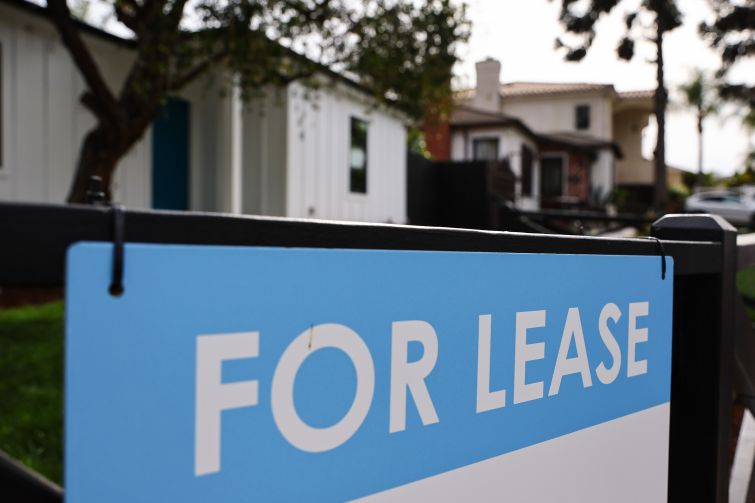Build-to-Rent’s Big Momentum Gives Proptech an Opening
Firms find work servicing tracts of new single-family rentals both vast and narrow
By Philip Russo March 5, 2024 11:35 am
reprints
As high mortgage rates and historically low supply continue to make homebuying an unfulfilled dream for many Americans, residential developers and contractors are pivoting hard to build-to-rent as a possible solution for would-be buyers.
Seeing the whirlwind of build-to-rent (BTR) development projects sweeping the country, some proptech companies have scaled-up their services to meet the submarket’s needs.
Brian Zrimsek, an industry principal who oversees market research, product management and direction for proptech software giant MRI Software’s residential solutions, said the BTR boom was apparent and a direct result of the dearth of homebuying opportunities.
Referring to a recent study by RentCafe, a Yardi Systems-owned apartment and house rental online listing service, Zrimsek said, “A graph of build-to-rent completions from 2016 to 2020 went from an average of about 6,000 to 7,000 a year. In 2022, there were 14,500. There are currently 86,000 units under construction and, through 2026, some 116,000 will be delivered. So absolutely there is a ramp-up in this subset of single-family rental.”
Single-family rentals are of particular interest at this moment due to a poor buyer-seller market match with consumers, said Zrimsek. “We don’t build a lot of one-bedroom houses and we don’t build a lot of four-bedroom apartments,” he said. “So, as people continue to rent and they want to grow their family — they want a little more space, they want a garage and a yard, they want to have a pet — getting into a rental home gives them what they need as their family grows without having to buy the home, which is increasingly challenging.”
Given its size, MRI can offer BTR developers and operators a wide variety of services.
“From a software perspective, build-to-rent looks a lot like multifamily, with the major difference being that the units are distributed over a parcel of land as opposed to being built into a single building,” Zrimsek explained. “Build-to-rent says I’m building a community. It’s like, I take an apartment building, knock it over and spread it out on a couple acres. But I manage it as one property with amenities and a leasing office.
“By doing so, it looks to the software system a lot like an apartment building. The system doesn’t care if they’re stacked on each other or if they’re neighbors. The system cares that it’s one thing that I manage as a whole. The whole end-to-end life cycle for us is managing the leasing and management process for build-to-rent.”
BTR company Core Spaces, a residential real estate developer, owner and operator, is primarily developing communities outside urban environments, as a recent announcement about its more than $1 billion investment in 4,000 homes planned and under development across the Dallas-Fort Worth, Denver, Nashville, Austin, Charlotte and Florida Gulf Coast markets attests.
“I think if we were to find build-to-rent in New York City, you’d call it a condo, where there’s some owner-occupied and some tenant-occupied, but they’re not necessarily managed as a building from a leasing perspective,” said Zrimsek. “This is fundamentally single-family homes.
“So, yes, we need a little more land. I just read an article getting ready for this call. Some lady in California bought an acre and built seven little houses on it and leased them up like that. And then did it three more times. You’re not going to get land in New York City that you’re going to not go vertical with.”
Lessen, a booming property management platform for residential and retail real estate, is also addressing the needs of the BTR submarket, which it sees as a growing segment of its customer base, founder and CEO Jay McKee said in a recent interview with PropTech Insider.
“One hundred percent,” said McKee. “We’ve actually just closed our first — I can’t disclose who it is — full enterprise deal with a build-to-rent operator where they acquired thousands of homes. Now that they have a stabilized portfolio, it’s generally not their forte to then manage it ongoing. So we now have put this new group on our platform.”
McKee says that even the newly built homes eventually need repairs and other upkeep — and sometimes sooner rather than later. “You can imagine that there’s less tickets or work orders on a brand-new home versus a home that’s a 1990 vintage, but, quickly into year two and three, they’re just getting a lot of wear and tear. So we believe build-to-rent is a great opportunity, including just traditional homebuilders and what can we do with them during warranty and post-warranty repairs.”
McKee said Lessen is discussing its platform with several major public homebuilders as to how they can help developers improve results for residents not only after they move into a new home but also after they’ve lived there a few years and need repairs past the expiration date of most warranties.
While build-to-rent is a relatively new phenomenon in the residential market, renting homes isn’t, said MRI’s Zrimsek. “There’s about 16 million homes for rent in the United States. There are about 16 million professionally managed apartments in the U.S. The difference in those two figures, which are kind of the same big number, is that institutions manage the majority of those apartments, whereas institutions manage a minority of the single-family rental homes.
“It’s the institutional management that is different,” he added “That’s when companies like us come into play because we bring the solutions that larger, more complex organizations are going to need for accounting, management and centralization of things.”
Given the diffuse nature of large and small owners renting single-family homes, geography and economics play an even larger role in where build-to-rent communities are developed. Simply put, builders are building where land and labor are cheaper, and that’s generally the Sun Belt. So that’s where proptech firms will for now be doing most of their business in the submarket.
“If you look at the maps that are out there online, you can see that pretty clearly it is what in multifamily is called, ‘the smile,’” Zrimsek said. “If you come down the West Coast, go across Texas and through Georgia, Florida, and back up the East Coast, that’s the prime real estate for rental markets. That’s kind of like a smirk, where maybe we have the bottom half of the smile, but not the top half.”
As the BTR trend continues to grow, proptech startups without the broad and deep platforms of a Lessen or MRI will have to rely on being nimble and innovative in attempting to enter the market.
“I think it’s a little bit of both,” Zrimsek said of the challenge and opportunity for startups. “We just met with a third party not too long ago, and they explained what they do, and we’re doing the same thing. So there’s room for many providers in the space. But I think the further you get into the back office, and the larger the client company, there are scale efficiencies gained from the years of experience that we have.
“It’s hard to build a general ledger system in this day and age, because they’re already out there. With build-to-rent, it’s a lot like multifamily in how it manifests in the system, so we’re pretty confident that we can meet those needs.”
Philip Russo can be reached at prusso@commercialobserver.com.


